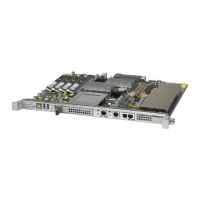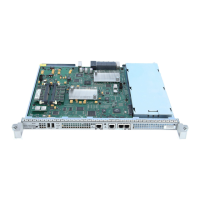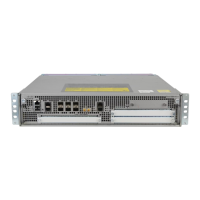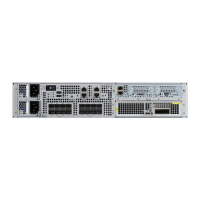22-13
Cisco 10000 Series Router Software Configuration Guide
OL-2226-23
Chapter 22 Configuring Multilink Point-to-Point Protocol Connections
MLP over Serial Interfaces
Syntax Description
Command History
Defaults The command is disabled.
Usage Guidelines By default the ppp multilink group command is disabled, which means the link can negotiate to join
any bundle in the system.
When the ppp multilink group command is configured, the physical link is restricted from joining any
but the designated multilink group interface. If a peer at the other end of the link tries to join a different
bundle, the connection is severed. This restriction applies when MLP is negotiated between the local end
and the peer system. The link can still come up as a regular PPP interface.
MLP over Serial Interfaces
The MLP over Serial interfaces feature enables you to bundle together T1 interfaces into a single logical
connection called an MLP bundle (see the
“MLP Bundles” section on page 22-3). MLP over Serial also
provides the following functions:
• Load balancing—MLP provides bandwidth on demand and uses load balancing across all member
links (up to 10) to transmit packets and packet fragments. MLP mechanisms calculate the load on
either the inbound or outbound traffic between specific sites. Because MLP splits packets and
fragments across all member links during transmission, MLP reduces transmission latency across
WAN links.
• Increased redundancy—MLP allows traffic to flow over the remaining member links when a port
fails. By configuring an MLP bundle that consists of T1 lines from more than one line card, if one
line card stops operating, the part of the bundle on the other line cards continues to operate.
Link fragmentation and interleaving—The MLP fragmenting mechanism fragments large nonreal-time
packets and sends the fragments at the same time over multiple point-to-point links to the same remote
address. Smaller real-time packets remain intact. The MLP interleaving mechanism sends the real-time
packets between the fragments of the nonreal-time packets, thus reducing real-time packet delay. For
more information about link fragmentation and interleaving, see the “Fragmenting and Interleaving
Real-Time and Nonreal-Time Packets” chapter in the Cisco 10000 Series Router Quality of Service
Configuration Guide, at the following url:
group-number Identifies the multilink group. This number must be identical to the
multilink-bundle-number you assigned to the multilink interface. Valid
values are:
• MLP over Serial—1 to 9999
• Single-VC MLP over ATM—10,000 and higher
• Multi-VC MLP over ATM—1 to 9999
Cisco IOS Release Description
12.0 The multilink-group command was introduced on the Cisco 10000 series
router.
12.2 This command was changed to ppp multilink group. The multilink-group
command is accepted by the command line interpreter through Cisco IOS
Release 12.2.
12.2(28)SB This command was integrated into Cisco IOS Release 12.2(28)SB.

